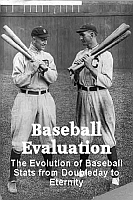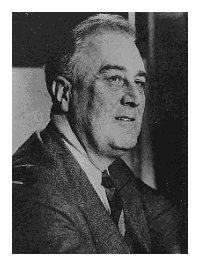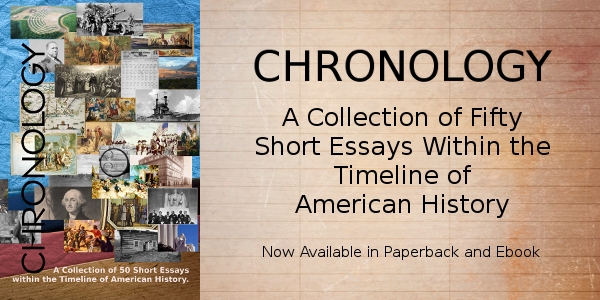Sponsor this page. Your banner or text ad can fill the space above.
Click here to Sponsor the page and how to reserve your ad.
-
Timeline
1931 - Detail
March 19, 1931 - The state of Nevada legalizes gambling.

Okay, several years from now, the idea of a state legalizing gambling will be so foreign to students of history that they'll think it Jurassic. Because, today, almost all states are starting to legalize it in some form. But for a state to do that in 1931, during the depression, while our government looked past the warnings of rumblings of pending war in Europe, was monumental. Now, because Nevada was not exactly easy for most normal folks to get there in 1931, except for the elites of the west and east coasts, it didn't affect many people. Plus, it's not like there hadn't been gambling in the state, many in open parlors in Reno or Las Vegas before, and some say in the indigenous community for over two thousand years. It just wasn't legal in 1930 after many twists and turns had already taken place.
But we know what it grew into. So how did it come to be? And who were the driving forces behind the movement? Don't be surprised that you might know a few of the names.
As the Timeline below shows, the efforts to legalize or make illegal gaming took many twists and turns since the middle of the 19th century. Most were ineffective, and perhaps, naieve, as gaming continued within cities such as Reno, on Indian reservations, and in many a back room parlor. By the 1920's, Reno was the gambling capital of Nevada, offering legal and illegal games.
By 1930, the census showed that Nevada had grown to 89,168 people. They elected a new legislature, with one of the freshman in the Nevada State Assembly, Phil Tobin, finally putting a plan in motion. He introduced a bill that would allow wide-open gambling, known as Assemby Bill 98. It passed the legislature and was signed into force by Governor Fred Balzar on March 19, 1931. It was thought to be a short term fix to their economic problems. That was not accurate.
It did not take long for legal gaming parlors to open. In Reno, the Bank Club opened the next day; by the end of 1931, they were joined by the Riverside Hotel. In Las Vegas, the Northern Club on Fremont Street opened first, followed by the Red Rooster Nightclub on the site of today's Mirage. From 1935-1947, Reno's lavish casinos were the preeminent in the state. Slowly, however, pushed by the construction of Boulder Dam, Hoover Dam today, which brought many workers into town, Las Vegas began to boom.
The local press was not that enthused by the new bill, unaware of its economic impact to come. Others around the country saw its potential.
"The lid is off now, the sky is the limit, and investors can feel safe to place their money here in high-class gambling casinos, and there may be keen rivalry between Las Vegas and Reno for the title of the 'Monte Carlo of America.'," Earl H. Leif, UPI International.
After World War II had ended, Las Vegas began to attract organized crime as owners of its legal casinos, which often fronted for operations in money laundering, loan sharking, and extortion. During the next twenty years, the entire nation was purely anti-gambling, except for back room games and card rooms.
In 1941, the El Cortez hotel opened on Fremont Street with Meyer Lansky, Bugsy Siegel, Moe Sedway, and Gus Greenbaum buying out the original owner in 1945. The mob was in town. While they owned the El Cortez for only one year, the building of the Flamingo began to attract greater attention. It originated under Billy Wilkerson, who bought thirty-three acres and started construction. But he had a gambling problem, and eventually needed cash. Meyer Lansky and his associates, including Siegel, were glad to invest. They pushed Wilkerson out, opened the casino without finishing the rooms, and started out disastrously. When they finally reopened, it is thought that Siegal had not run the operation efficiently; he was killed, although the case was never technically solved or tied to the casino's poor management.
It wasn't until 1976 that New Jersey joined the legalization crowd, opening lavish casinos in the once thriving, but now sliding, resort town of Atlantic City.

Timeline of Nevada Gambling
June 1859 - Gold Hill Mining District outlaws gambling, murder, theft, and assault. Banishment from the district was the punishment for banking a game.
Prior to 1861 - Other prospectors in the Sierra Mountains gambled in mining camps and towns, bringing their games of chance from the east coast.
1861 - After the appointment of President Abraham Lincoln's choice for Territorial Governor, James Nye, who held a vigilant stance against gambling, the territorial legislature passed strict laws and penalties on gambling.
1864 - Nevada becomes a state with the new state legislature wanting to legalize gambling, but the effort failed. They did pass laws that reduced the penalties on illegal gaming. Operators were now barely punished and gamblers not at all.
1869 - State legislature decriminalized certain forms of gambling.
1909 - The Progressive movement succeeds in banning gambling, effective in 1910. This did not stop their operation, but moved gaming indoors into illegal private clubs.
1919 - Through the previous decades, gaming rules relaxed, and by this year, all counties and cities were licensing card parlors for bridge and whist.
1931 - Wide open gambling passes with Assembly Bill 98. The bill made legal certain games. It was introduced in part to generate revenue during the depression after the struggle in the mining industry.
April 2, 1931 - Clark County Commission grants licenses to eight Las Vegas businesses; the Northern Club, Las Vegas Club, Boulder Club, Red Rooster Nightclub, Big Four Club, Exchange Club, Rainbow Club, and Meadows Casino.
Photo above: Illegal gambling at Reno establisment in 1910, 1910, L. Levitch. Courtesy Library of Congress. Photo Below: Two of the earliest gambling establishment in Las Vegas with mob connections; (left) the El Cortez, 2007, Mike Russell, Wikipedia Commons C.C. 3.0.; (right) Front entrance of the Flamingo, 1946, Kstadelman. Courtesy Wikipedia Commons. Info Source: Wikipedia Commons; nevadaresorts.org; history.com; "Nevada marks 90th anniversary of legal gambling, Mobsters Played Critical Role in Growth of Silver State's Dominant Industry, 2021, Geoff Schumacker, themobmuseum.com; jobmonkey.com; gambling-history.com.

History Photo Bomb

But we know what it grew into. So how did it come to be? And who were the driving forces behind the movement? Don't be surprised that you might know a few of the names.
As the Timeline below shows, the efforts to legalize or make illegal gaming took many twists and turns since the middle of the 19th century. Most were ineffective, and perhaps, naieve, as gaming continued within cities such as Reno, on Indian reservations, and in many a back room parlor. By the 1920's, Reno was the gambling capital of Nevada, offering legal and illegal games.
By 1930, the census showed that Nevada had grown to 89,168 people. They elected a new legislature, with one of the freshman in the Nevada State Assembly, Phil Tobin, finally putting a plan in motion. He introduced a bill that would allow wide-open gambling, known as Assemby Bill 98. It passed the legislature and was signed into force by Governor Fred Balzar on March 19, 1931. It was thought to be a short term fix to their economic problems. That was not accurate.
It did not take long for legal gaming parlors to open. In Reno, the Bank Club opened the next day; by the end of 1931, they were joined by the Riverside Hotel. In Las Vegas, the Northern Club on Fremont Street opened first, followed by the Red Rooster Nightclub on the site of today's Mirage. From 1935-1947, Reno's lavish casinos were the preeminent in the state. Slowly, however, pushed by the construction of Boulder Dam, Hoover Dam today, which brought many workers into town, Las Vegas began to boom.
The local press was not that enthused by the new bill, unaware of its economic impact to come. Others around the country saw its potential.
"The lid is off now, the sky is the limit, and investors can feel safe to place their money here in high-class gambling casinos, and there may be keen rivalry between Las Vegas and Reno for the title of the 'Monte Carlo of America.'," Earl H. Leif, UPI International.
After World War II had ended, Las Vegas began to attract organized crime as owners of its legal casinos, which often fronted for operations in money laundering, loan sharking, and extortion. During the next twenty years, the entire nation was purely anti-gambling, except for back room games and card rooms.
In 1941, the El Cortez hotel opened on Fremont Street with Meyer Lansky, Bugsy Siegel, Moe Sedway, and Gus Greenbaum buying out the original owner in 1945. The mob was in town. While they owned the El Cortez for only one year, the building of the Flamingo began to attract greater attention. It originated under Billy Wilkerson, who bought thirty-three acres and started construction. But he had a gambling problem, and eventually needed cash. Meyer Lansky and his associates, including Siegel, were glad to invest. They pushed Wilkerson out, opened the casino without finishing the rooms, and started out disastrously. When they finally reopened, it is thought that Siegal had not run the operation efficiently; he was killed, although the case was never technically solved or tied to the casino's poor management.
It wasn't until 1976 that New Jersey joined the legalization crowd, opening lavish casinos in the once thriving, but now sliding, resort town of Atlantic City.

Prior to 1861 - Other prospectors in the Sierra Mountains gambled in mining camps and towns, bringing their games of chance from the east coast.
1861 - After the appointment of President Abraham Lincoln's choice for Territorial Governor, James Nye, who held a vigilant stance against gambling, the territorial legislature passed strict laws and penalties on gambling.
1864 - Nevada becomes a state with the new state legislature wanting to legalize gambling, but the effort failed. They did pass laws that reduced the penalties on illegal gaming. Operators were now barely punished and gamblers not at all.
1869 - State legislature decriminalized certain forms of gambling.
1909 - The Progressive movement succeeds in banning gambling, effective in 1910. This did not stop their operation, but moved gaming indoors into illegal private clubs.
1919 - Through the previous decades, gaming rules relaxed, and by this year, all counties and cities were licensing card parlors for bridge and whist.
1931 - Wide open gambling passes with Assembly Bill 98. The bill made legal certain games. It was introduced in part to generate revenue during the depression after the struggle in the mining industry.
April 2, 1931 - Clark County Commission grants licenses to eight Las Vegas businesses; the Northern Club, Las Vegas Club, Boulder Club, Red Rooster Nightclub, Big Four Club, Exchange Club, Rainbow Club, and Meadows Casino.
Photo above: Illegal gambling at Reno establisment in 1910, 1910, L. Levitch. Courtesy Library of Congress. Photo Below: Two of the earliest gambling establishment in Las Vegas with mob connections; (left) the El Cortez, 2007, Mike Russell, Wikipedia Commons C.C. 3.0.; (right) Front entrance of the Flamingo, 1946, Kstadelman. Courtesy Wikipedia Commons. Info Source: Wikipedia Commons; nevadaresorts.org; history.com; "Nevada marks 90th anniversary of legal gambling, Mobsters Played Critical Role in Growth of Silver State's Dominant Industry, 2021, Geoff Schumacker, themobmuseum.com; jobmonkey.com; gambling-history.com.









